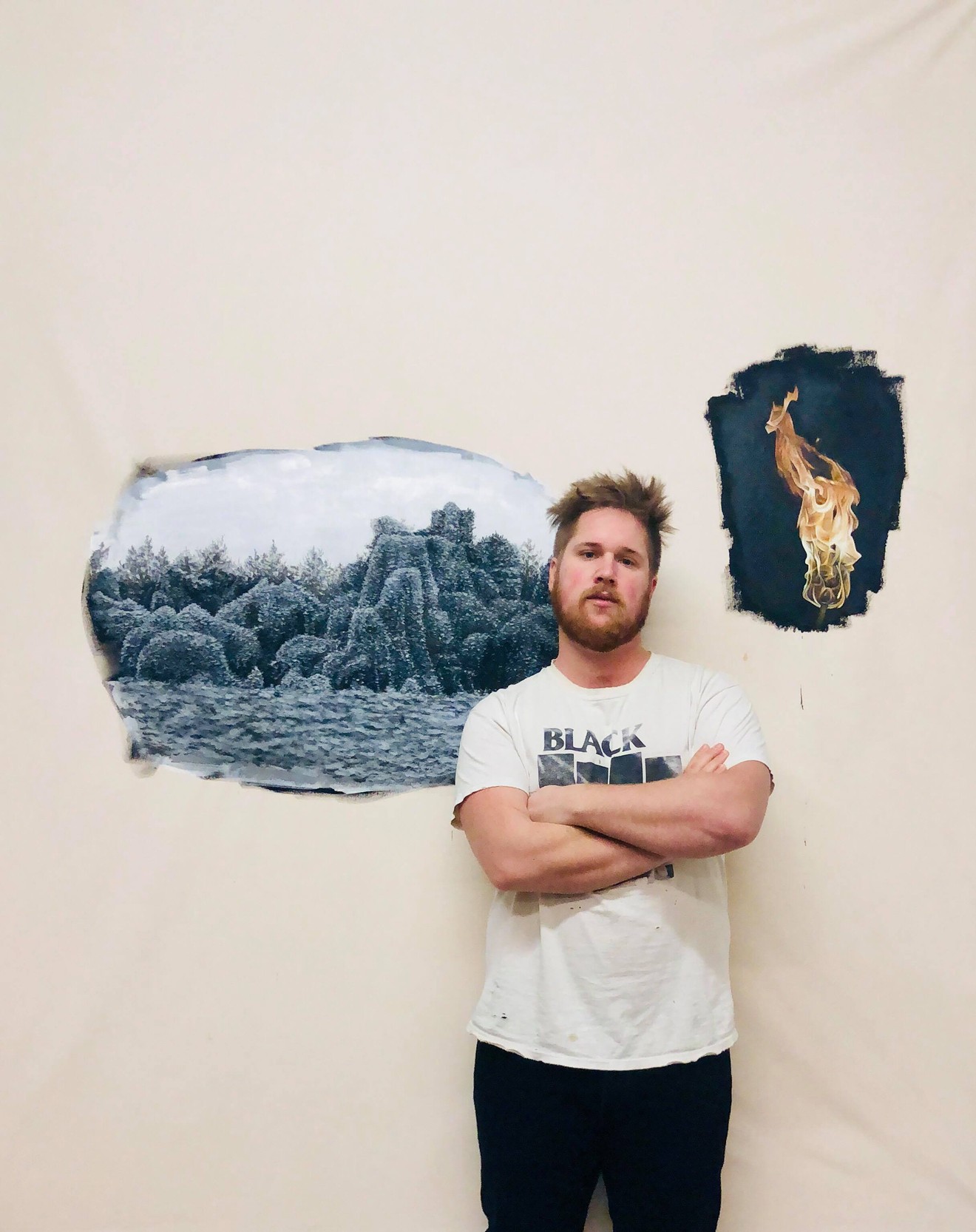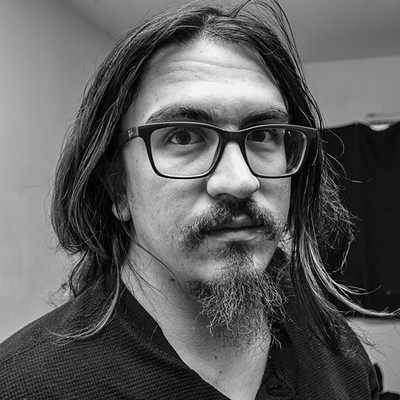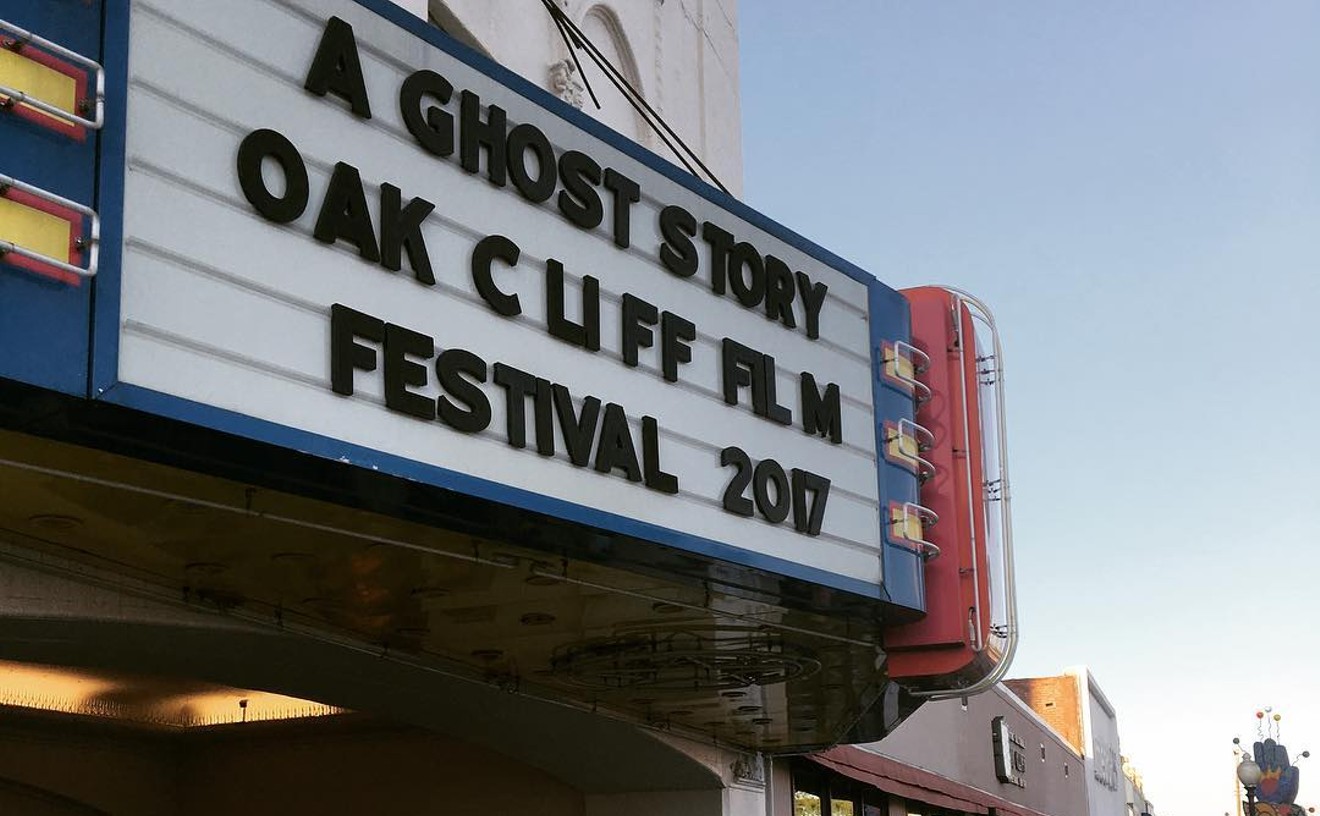“Short days make for long nights,” Binnie tells the Observer over Facebook. “These new works, while in the same vein, are definitely more ambitious than previous works and I think it has a lot to do with time, winter, and my surroundings.”
Binnie’s time is split between his home in Williamstown, Massachusetts, and an apartment in Brooklyn, but the 32-year-old painter cut his teeth in his hometown of Dallas. He’s preparing for his first-ever showing at the Massachusetts Museum of Contemporary Art, as part of an 11-month-long show titled The Lure of the Dark, set to open March 3.
The show is themed around the concept of night, featuring the work of 12 artists, including Binnie, who’s contribution to the show is an extension of his surroundings, as well as the “national crisis” he says our country is in.
“While I have lived in other cities before, something about being in New England — a much older region of the country — has had me dwelling a lot on the idea of America, and my own relationship to it,” Binnie says. “I think it has sort of forced me to prod some of the mythic aspects of this land, an individual response to a collective anxiety about the state of the nation.”
Binnie says the New England countryside has had a major impact on his work and life, but equally important was his time in the art scenes in Dallas and California, where he completed his undergraduate studies. In both cities, Binnie says, he found little success; his exposure to the world of art outside Dallas was critical to his development."There's this assumption that there is this one big art world but it's not really true. There are so many, and layers within each." — William Binnie
tweet this
“There’s this assumption that there is this one big art world but it’s not really true,” he says. “There are so many, and layers within each.”
Binnie says after arriving in Claremont, California, in 2004, he mostly made small and unambitious art while working in galleries as a student. After returning to Texas, however, he found himself less affected by the politics of the Dallas art scene, and instead focused on his work. He co-founded Art Beef and its subsidiary art space, Beefhaus, soon after beginning his master of fine arts degree at Southern Methodist University in 2012. But navigating through the social strata of artists and collectors still proved to be a challenge.
“I think the second you start worrying about the approval of your respective scene, you’re in trouble, because by then you’ve already unconsciously decided to make work with that scene in mind,” Binnie explains. “We all respond to our surrounding environment in one way or another, but artists do get too caught up in the social sphere sometimes, and seeking that approval can be suffocating to that work itself. You’re never going to please everybody, ever, and it took me a long time to learn that.”
Binnie’s work is far from constrained, although the theme of suffocation is apparent in one of the pieces he plans to show at his upcoming group exhibition in March. “The Vine that Ate the South,” a work still in development, will show a forest covered by an overwhelming mass of kudzu vine and a flaming torch. The piece goes beyond Binnie’s central theme of examining our country’s troubled past and its relation to our national identity, but it also implicates us all for our part in the nation's current state.
“America really is more of an idea than a place or a people or a thing. I think it’s important to remember that,” Binnie says. “I, being from central Dallas, feel that I have much more in common with someone from Northern Mexico than I do with someone who grew up in Maine, and yet, we are the same nationality … The more we recoil into hamlets of comfort and self-segregate, the less viable the idea of America becomes.”












